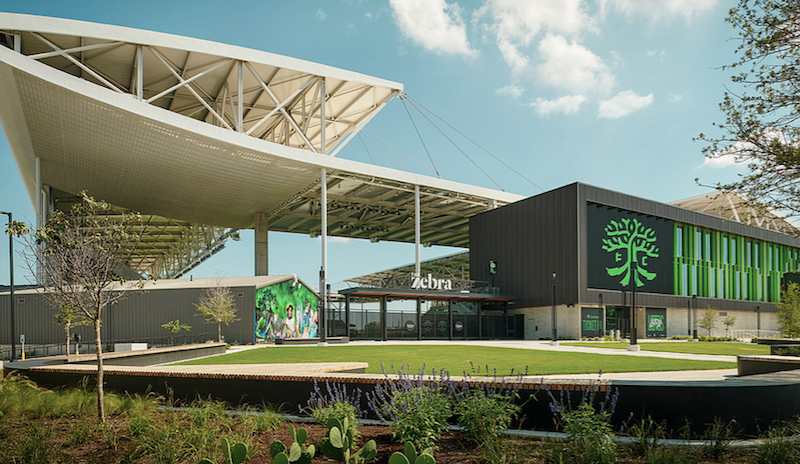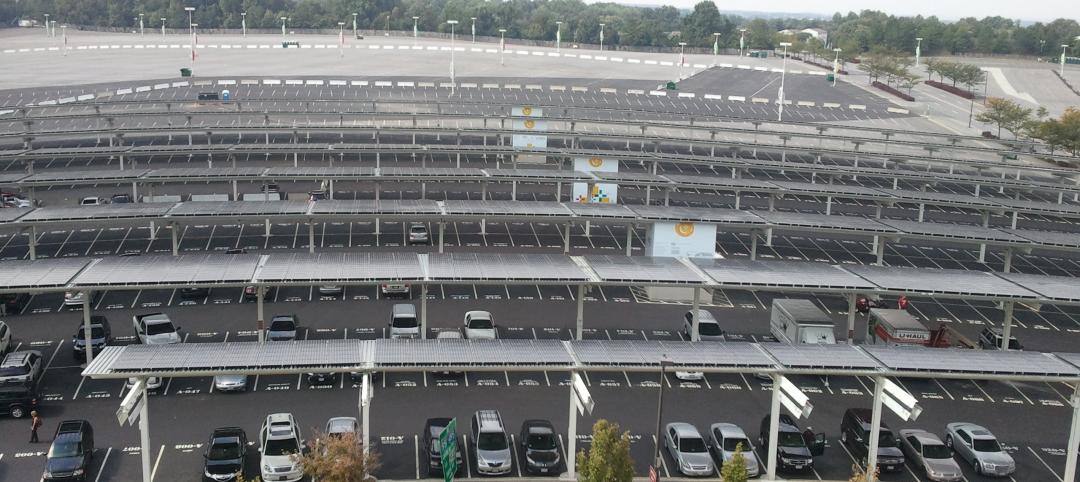Q2 Stadium, a new 20,000-seat stadium for Austin FC, has completed construction. The Gensler-designed project capitalizes on its natural landscape, the city’s cultural heritage, and its tech-forward growth.
The project features one of the largest roofs on a soccer-specific stadium, which will cover every seat, protecting fans from rain and sun. The canopy enclosure features a combination of customized curved metal panel systems on the bullnose, soffit, and edges; and a single-ply roofing on the top side of the canopy. The stadium is also oriented on its site to pull in breezes aided by open corners, an open-air concourse, and breathable mesh fabric seats.
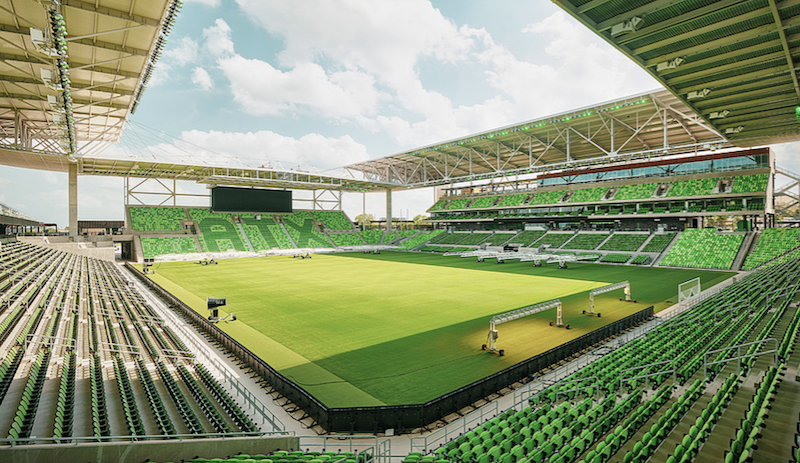
Open concourses and standing areas allow fans to move around and socialize or visit local food vendors. VIP guests can access hospitality-inspired air-conditioned clubs and suites. Multiple outdoor spaces surround Q2 Stadium, including an outdoor amphitheater and a stage for live music. Outdoor spaces are open to the public on non-game days and can host farmer’s markets and concerts.

Q2 Stadium is the first MLS stadium to use Whole Building Life Cycle Analysis (WBLCA) to environmentally optimize the structure and enclosure and reduce embodied carbon. The WBLCA illustrated the environment savings achieved through the use of a cable system to support portions of the roof, as well as optimizations to the concrete mix designs.
In addition to Gensler’s design, the project was delivered with Walter P Moore’s multi-discipline service approach, which includes structural engineering, enclosure engineering, water proofing consulting, construction engineering, and whole building life cycle assessment.
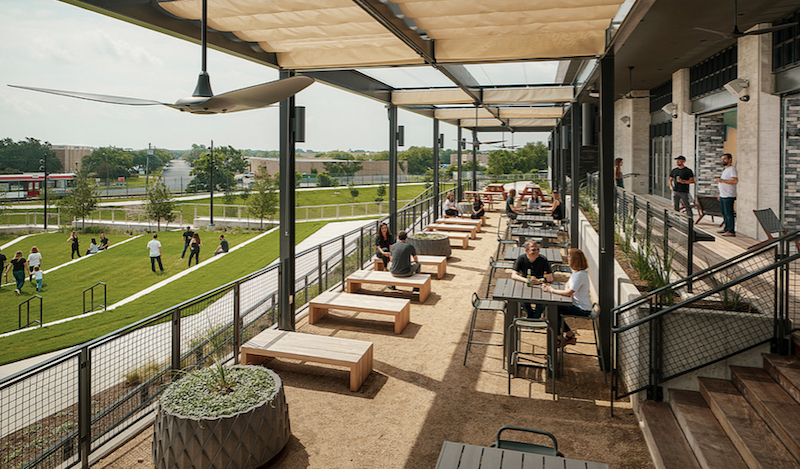
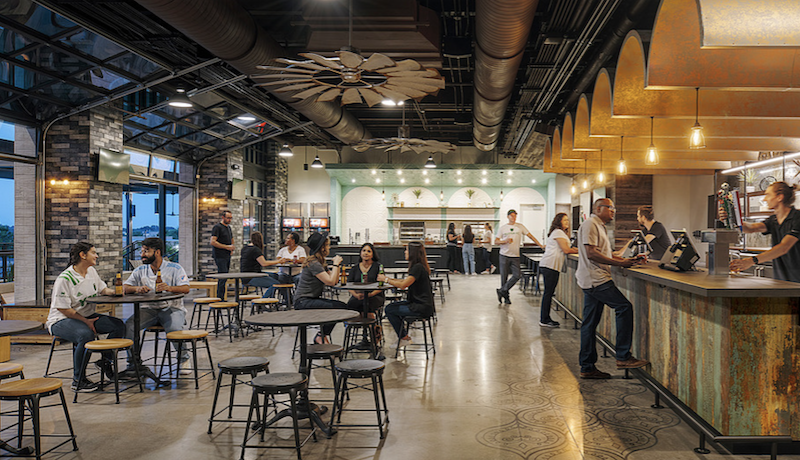
Related Stories
| Sep 30, 2011
Design your own floor program
Program allows users to choose from a variety of flooring and line accent colors to create unique floor designs to complement any athletic facility.
| Sep 16, 2011
Largest solar installation completed at Redskins' football stadium
On game days, solar power can provide up to 20% of FedExField’s power.
| Sep 12, 2011
First phase of plan to revitalize Florida's Hialeah Park announced
This is the first project of a master plan developed to revive the historic racetrack.
| May 25, 2011
Olympic site spurs green building movement in UK
London's environmentally friendly 2012 Olympic venues are fuelling a green building movement in Britain.
| Apr 11, 2011
Wind turbines to generate power for new UNT football stadium
The University of North Texas has received a $2 million grant from the State Energy Conservation Office to install three wind turbines that will feed the electrical grid and provide power to UNT’s new football stadium.
| Apr 5, 2011
U.S. sports industry leads charge in meeting environmental challenges
The U.S. sports industry generates $414 billion annually. The amount of energy being consumed is not often thought of by fans when heading to the stadium or ballpark, but these stadiums, parks, and arenas use massive quantities of energy. Now sports leagues in North America are making a play to curb the waste and score environmental gains.
| Mar 25, 2011
Qatar World Cup may feature carbon-fiber ‘clouds’
Engineers at Qatar University’s Department of Mechanical and Industrial Engineering are busy developing what they believe could act as artificial “clouds,” man-made saucer-type structures suspended over a given soccer stadium, working to shield tens of thousands of spectators from suffocating summer temperatures that regularly top 115 degrees Fahrenheit.
| Mar 11, 2011
University of Oregon scores with new $227 million basketball arena
The University of Oregon’s Matthew Knight Arena opened January 13 with a men’s basketball game against USC where the Ducks beat the Trojans, 68-62. The $227 million arena, which replaces the school’s 84-year-old McArthur Court, has a seating bowl pitched at 36 degrees to replicate the close-to-the-action feel of the smaller arena it replaced, although this new one accommodates 12,364 fans.


